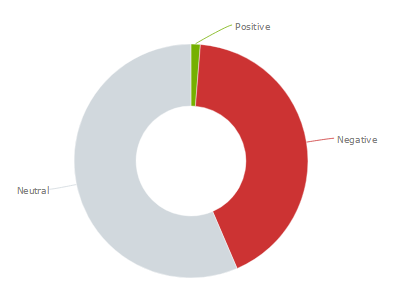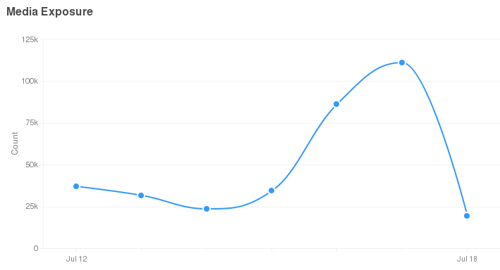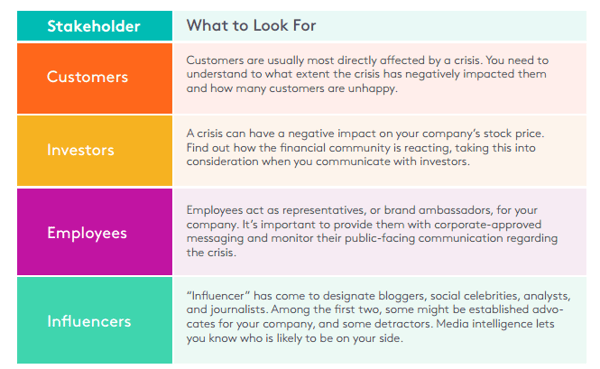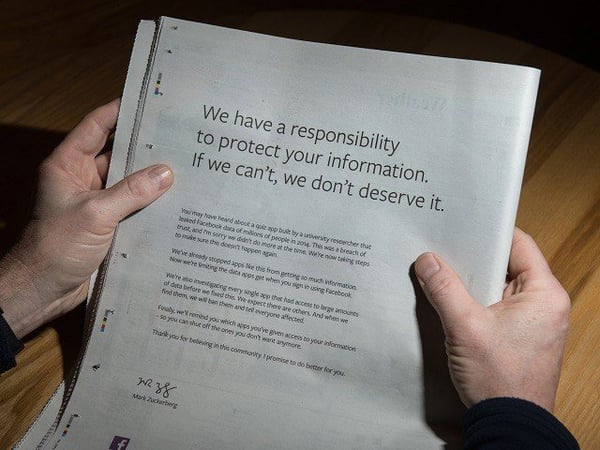So you’ve been hit by a crisis, now what?
Once a story has erupted online, there’s not much that can be done to prevent people from seeing it. Rather than hiding away until the crisis is over, aim for a prompt, informative response. This will begin damage control, put the story straight (if needed), and reassure your stakeholders of the next steps.
Not managing a PR crisis properly can have a long-term impact on your brand. Below you will see an outline of steps to follow should you come face-to-face with a brand crisis.
Eight steps to manage a brand crisis
1. Assess the situation
First things first, you need to gather a full picture of the brand crisis. How bad is it? Speak to employees who may be able to shed light on the situation. Understand what actually happened and how the press and general public are interpreting it.
Media monitoring tools can help you to gather a quick overview of how the public is responding on social media. Has your brand sentiment drastically changed? Have your brand mentions skyrocketed?

These two metrics can indicate how viral the crisis is going, as well as whether people are talking about it positively or negatively.


Additionally, before you go into crisis mode, check whether the negative coverage is originating from one source or many. It may be better to respond directly to these detractors, rather than issue a public statement.
2. Assign duties and communicate
As soon as you have an idea of what has happened, you need to brief any public-facing employees. Let them know what has happened, the steps you will take to deal with the crisis, and how to respond to any initial questions from the press and public while you’re drafting your official response.
It’s super important that employees aren’t discussing the crisis publicly without your say so.
At this time also decide who will manage the press, keep the executive team informed, serve as liaison to other key stakeholders (including partners, customers, members, etc.), and record every detail, action taken, external response, and resolution.
3. Understand your audience
Think about who the crisis is going to impact and what it is that they’ll be concerned about. For example, if you’ve been affected by a data-breach, chances are your customers will be more concerned about whether their credit card details and passwords have been stolen, rather than temporary loss of access to the service. You’ll want to draft a response based on these concerns.
Because we can track commonly mentioned keywords using a social media monitoring tool, which will easily detect keywords that may indicate initial worries from the public. The chart below goes into more depth about identifying audiences and how they’re likely to react.

4. Decide how to respond
Based on how the crisis is likely to affect your stakeholders and what the most common concerns of the public are, decide what the best medium of response is.
You can communicate through social media, a press release, blog post, or a combination. If there are a lot of people discussing the crisis on social media, you’ll want to have some form of response on there.
When drafting your crisis statement, make sure you’re transparent and take responsibility if you’ve been at fault.
Address what the crisis is, what really happened (if appropriate), and how you’re rectifying the issue. It's always good to learn from past mistakes, the infamous Kendall Jenner Pepsi ad failure is a perfect example of a campaign that decided to respond quickly.
5. Get your message heard
It’s time to work your contacts. Reach out to journalists you have relationships with and respond to those who have been writing about the crisis. If the crisis has been picked up on social media (which, chances are, it has), post a response on there too.
Consider creating a video responding to a crisis. After all, not only does it help keep your response human, but video is also a favored form of content on social media algorithms. This means that video content is likely to show up first on social media users' feeds and, therefore, will give your content the best possible organic reach.
In addition, it’s also worth responding to some of the questions from social media users. If you’re overwhelmed by messages, prioritize brand advocates and influencers, as they’ll have the biggest impact on your brand.
Once you’ve reactively responded to the crisis, it’s worth considering a long-term strategy for shaping and changing brand opinion. One way to do this would be through paid advertising, to reach those who aren’t actively following your brand. For example, since the Cambridge Analytica scandal, Facebook has been investing heavily in paid campaigns about how it's handling data and its long-term vision for Facebook.

6. Measure the impact of your statements and posts as you go
How are your updates being received? Media monitoring enables us to track how people are responding and how sentiment is shifting. If you send a press release through a comprehensive PR distribution tool, you can also track how many people opened the release, as well as the amount of time they spent reading it. You can then follow up with journalists as appropriate.
7. Know when to stop
With any crisis, online buzz does eventually settle down. The amount of time it takes to do so varies from crisis to crisis. When PR and social media mentions begin to dramatically drop, it’s time for you stop reminding everyone of what happened and start to rebuild value.
Further to this, remember we can never please everyone. After making all the points you can make, stop responding to detractors, especially if they’re trolls with little influence.
8. Prevention
Maybe you can avoid the same thing happening again. Learn from your mistakes and use your experience to handle future crises better. The general public may be forgiving the first time, but if you make the same mistake twice, this will severely affect brand trust.
A few things you can do to prevent a crisis now:
- Ensure all data is backed up securely to prevent loss of data.
- Create strong passwords, keep your computer updated, and have virus protection in place.
- Create social media guidelines for employees to prevent them from putting you in a sticky situation.
- Set up alerts for spikes in social media mentions to spot any developing negative discussions.
- Double check any marketing and PR campaigns with focus groups or employees not in your team to spot any wording that could cause offense or be misinterpreted.
- Develop relationships with key PR and social media influencers, as they will help to shape public opinion if a crisis hits again.

 by Sean Wood
by Sean Wood
 by Lauren Pope
by Lauren Pope